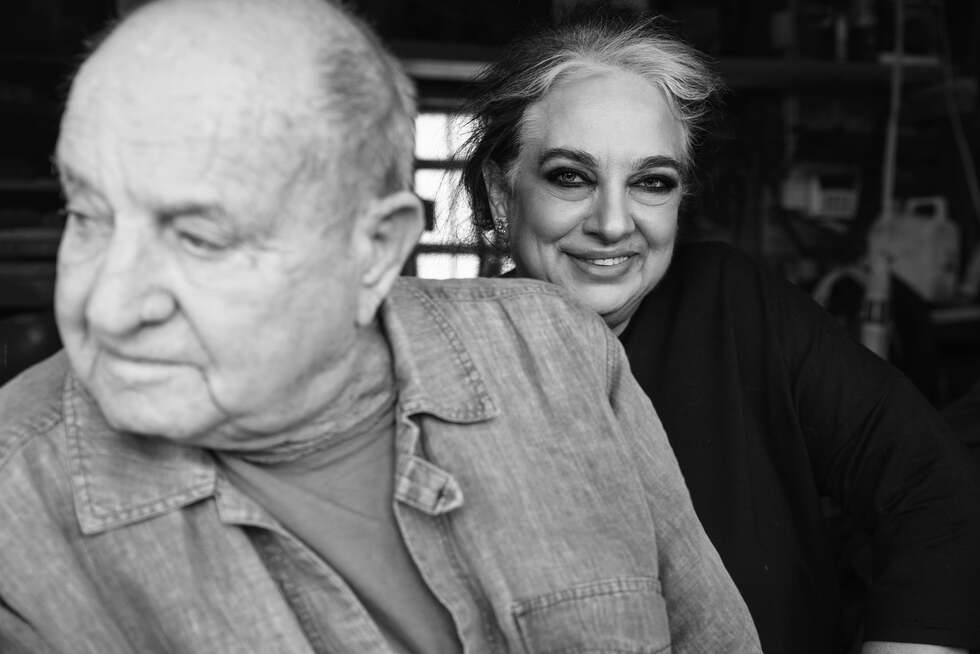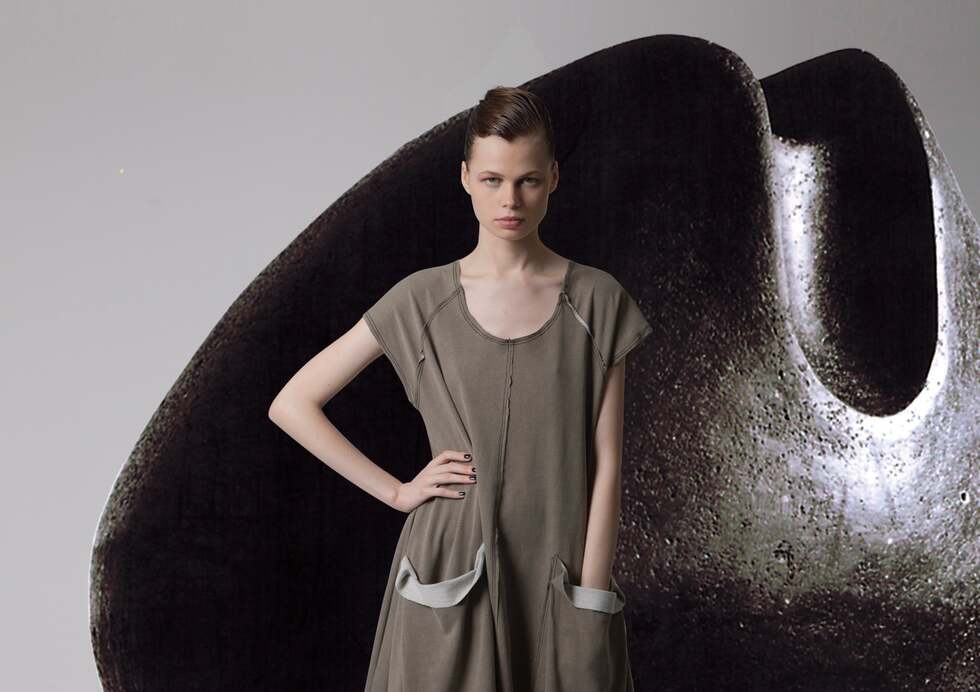ABOUT ART & FASHION
ABOUT HAGAR ALEMBIK

About Hagar Alembik
Since completing her studies at the Shenkar College of Engineering and Design’s Fashion Department in the late 1980s, Alembik has been one of the most prominent fashion designers in Israel, defining local couture through her work: a combination of soft, flowing fabrics appropriate for the local climate with an eclectic color and texture scheme reminiscent of Israeli street style. In recent years she has marketed her work successfully around the world, enjoying good fortune after a difficult period that took place when she was pushed out by Hagara, the brand she’d previously founded.
Hagar raised her daughter as a single mother. Hagar started her fashion education at 30, raising her single daughter Lee while going to school. "I was the oldest student in class. Everyone was in their early 20s and I already had a 2nd grader at home, Lee would join me for a full school day in Shenkar right after she finished her school. It was quite an experience for both of us. "
HAGAR IS MOLDING HER FABRICS JUST AS HER FATHER MOLDED HIS SCULPTURES.
Hagar's father, Emanuel HaZofe, was a well known sculpture who took his daughter around the world to absorb and learn art. Today, Hagar's designs sculpt onto the woman's body, just as her father's sculptures became an integral part of the Israeli landscape. Her molding and workings of fabric are a reflection of sculpting as much as her father's chiseled metal.
"I only realized I wanted to become a fashion designer at a relatively older age. I was already a mother by then. This was always clear to me and it was only during my studies in Shenkar that I realized just how much it truly meant to me" Says Hagar "Only after we were given fabrics to work with and asked to dream of how to shape it into some silhouette, into clothes, only then it started really burning in me."


Mixing her daughter’s childhood drawings with famous works of art, drawing inspiration from her father’s sculptures - Hagar's home
One of the first objects one finds in fashion designer Hagar Alembik's home is a chiseled sculpture made by her father, sculptor Emanuel HaZofe, who died last year at the age of 90. Alembik, wearing black dress that had become a uniform of sorts, says she views her career as an intergenerational collaboration with her father and his artwork.
"my father worked with basalt, with all its power and tenderness," she says "I got to clothing through sculpting and 3D. Where my father turned to basalt, I turned to fabric. He chose a hard material and I chose a soft one. The amazing thing is that my father imbued the stone with softness. People like to caress his statues. We both investigated the boundaries of form, he through sculpting and I through fashion design, and both of us ended up at the same place."
